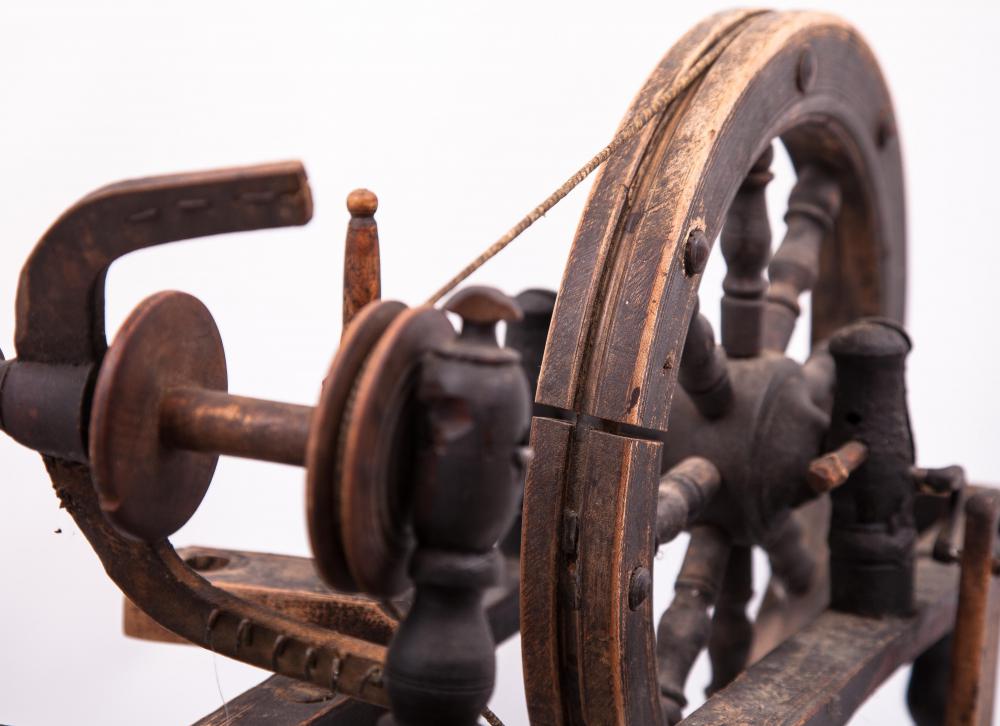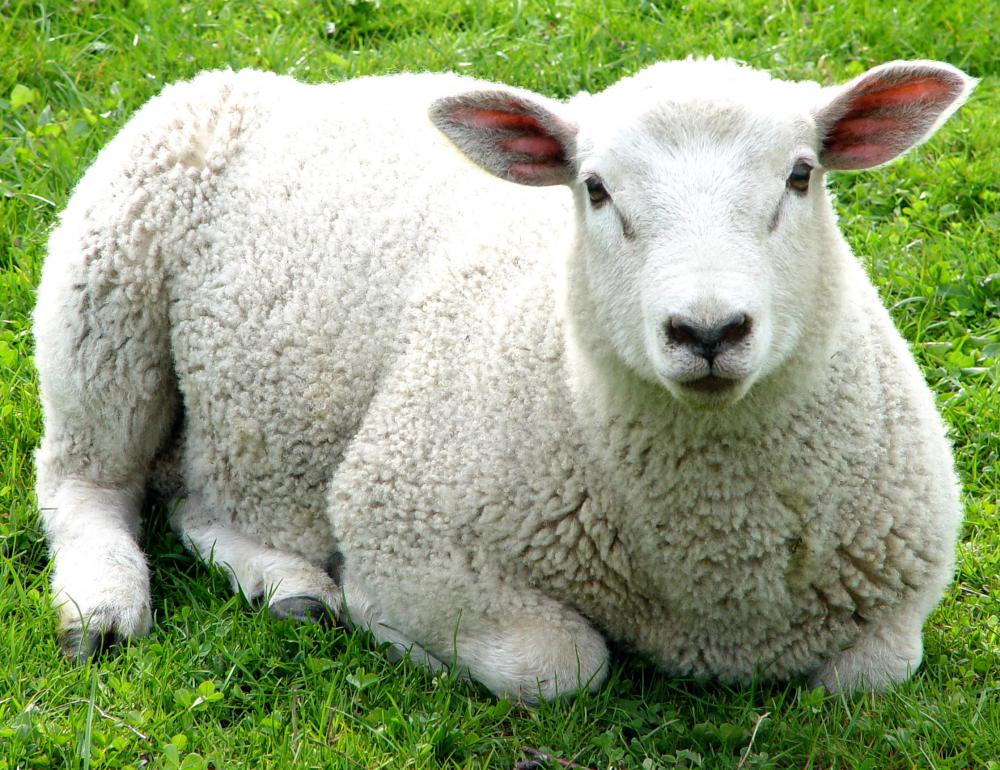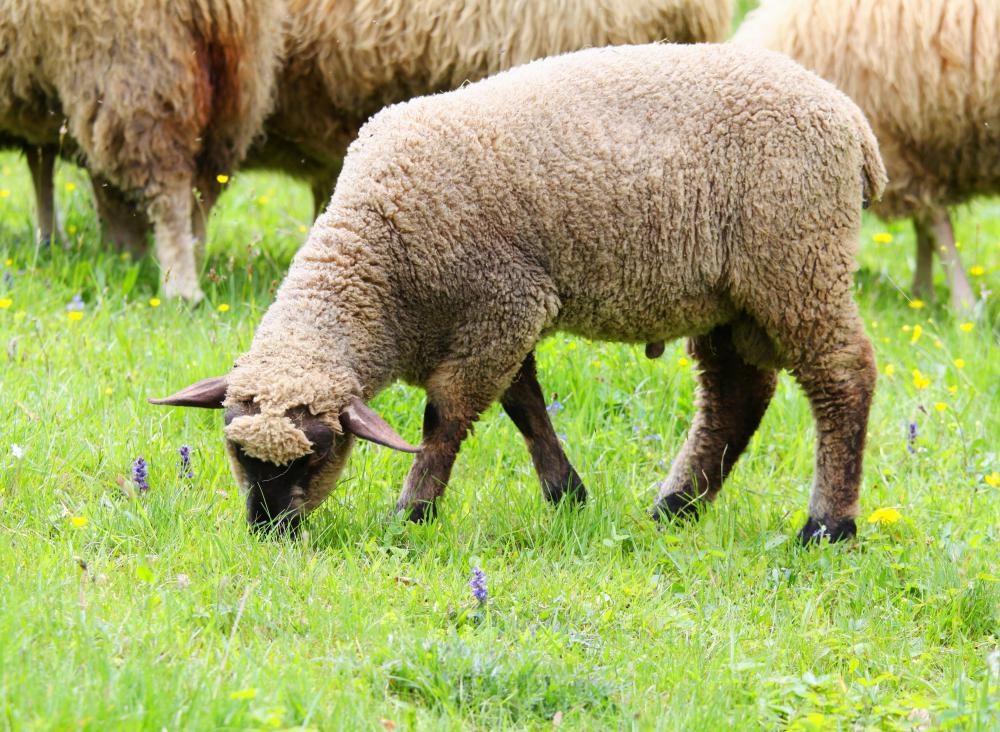At HomeQuestionsAnswered, we're committed to delivering accurate, trustworthy information. Our expert-authored content is rigorously fact-checked and sourced from credible authorities. Discover how we uphold the highest standards in providing you with reliable knowledge.
What is Wool?
Wool is the dense, warm coat of sheep, also called a fleece. The hair of sheep has many unique properties that make it well suited to textile production, something humans realized approximately 8000 BCE, when sheep first began to be domesticated. Wool is used in a variety of textiles and can be found woven or knitted.
This material is highly flame resistant, and frequently used for mattresses and rugs for that reason. It is also highly durable, able to stretch up to 50% when wet and 30% when dry. In addition, wool has excellent moisture wicking properties, pulling moisture into the core of the fiber so that it doesn't feel wet or soggy to the wearer. It pulls moisture away from the skin, as well, and is worn by people in a wide variety of situations who prefer the feeling of dry air next to the skin to the clammy sense of perspiration.

Wool is favored for textile production because it is easy to work with and takes dye very well. The springy fibers remember shapes when well cared for. Furthermore, it takes to felting, a process in which fibers interlock into a tight mat, very well. Felt is used as insulation, for arts and crafts projects, and for decorative accents.
Production starts with the shearing of the sheep, which usually happens once a year. A skillful shearer can remove the entire fleece at once with long flowing strokes, keeping the fibers long. After shearing, the wool is washed to remove impurities. One of these impurities is lanolin, which is used in many cosmetics.

After washing, many producers combine wools for a specific blend and dye them together, so that the dye will take evenly, before carding it through a set of teethed rollers. Carding pulls the fibers straight, while removing any remaining dirt or vegetable matter. The wool is pulled into slivers, long strips of fibers loosely pulled together and running in the same direction. If, after carding, the wool is under 3 inches (almost 8 centimeters), it is twisted into rovings, rope like strands that can be spun for knitting. If the strands are longer, they must be combed and drawn before spinning.

Spinning pulls the fibers tightly together and twists them so that they retain a long yarn shape. Yarn can be spun in all sorts of thicknesses and gauges, depending upon the intended use. For wool weaving, the yarn tends to be very fine. For knitting, it may be quite chunky. There are myriad uses for wool, a highly versatile textile. For example, shorter, coarse wool will turn into carpeting, while medium length material will be used in suits.
After knitting or weaving, the wool is often shrunk through a controlled process so that it won't shrink excessively for the end user. Most knits are also blocked on forms to set a shape, and many products are also brushed for a specific finish.

Proper care for wool begins with following the label directions. In general, it should be allowed to rest between wearings, to retain its shape. It should never be compressed or stored on hangers, which will stretch it. Brushing wool will remove surface soil and stains before they are ground in, and a slightly damp cloth will remove deeper stains. The material should be dried flat at room temperature, not exposed directly to heat.
AS FEATURED ON:
AS FEATURED ON:


















Discussion Comments
@JackWhack – I own both a microfleece and a wool sweater, so I know what you are talking about. Microfleece is synthetic, so it is totally different from regular fleece.
Microfleece is made out of plastic drinking bottles that have been recycled. I think that's an awesome way to put old water bottles to good use!
Wool is very heavy when wet, and that's why we can't hang it up to dry. Gravity and the weight of the water would stretch it way out of shape.
Microfleece doesn't have that problem. In fact, the spin cycle of my washing machine gets my microfleece sweater plenty dry, and I hang it up in a doorway to dry the rest of the way.
If wool and fleece are the same thing, then why does microfleece feel so much softer and gentler on my skin than wool? It's like they are not even related.
Also, I can wash and dry microfleece without worrying about it shrinking. However, I don't need to put it in the dryer for long, because even when it's wet, it doesn't seem to hold much water. Wool, on the other hand, seems to take a long time to air dry and is very heavy when wet.
@anon158490 – Many people can't wear wool because it irritates their skin. I have sensitive skin, and I break out in an itchy rash if I wear wool.
It's possible to put on a long sleeve shirt underneath a wool jacket and not suffer any scratchiness. However, if the neckline of the undershirt is too low or the sleeves shorter than those of the jacket, the wool will come in contact with my skin, and it will drive me crazy.
It's hard to describe just how uncomfortable I feel in wool. It's like having dozens of little insect bites on my skin and sandpaper rubbing lightly against them.
It's important to remember when washing wool garments to use the gentle cycle and cold water. Warm water might cause the wool to shrink.
Also, it can be tempting to put the wool garment in the dryer on the delicate setting, but this is a bad idea. I tried this once, and my sweater shrank about two sizes.
What are the bad points about wool?
goats grow hair. sheep grow hair or wool. hair and wool are similar but not the same thing.
I wish there was more info on how it is actually manufactured, but the article overall was pretty helpful for my science report.
nice information. thanks.
Fiber from goats is called mohair. Fiber from sheep is called wool. Goats grow hair, sheep grow wool. Wool is "so good" because it is warm, water resistant, and easy to spin into thread or yarn for textiles.
I've recently heard from several sources that American wool is now commonly being thrown out as a waste product! How is that possible? One woman who farms told me it is too expensive to send it to China where the big market is. Aren't Americans using their natural resources? Someone needs to seize this opportunity to create some jobs.
Great articles!
When/how was wool discovered or first used?
Why the *fudge* is wool so good?
I need to learn how to tell if something is wool. I have a blanket that I bought in Mexico about 30 years ago. It is very pretty (bright colors) and quite heavy (don't need additional blankets in PA's winter). I haven't been using it, so it is almost new. I want to start using it but need to know what it is in order to care for it properly (machine wash or dry clean). It is tightly woven and feels soft (no obvious woolen scratch). (I have a wool fleece jacket that is soft and not scratchy.)
I thought wool was any fiber from an animal? Goats have yarn made from them and they call it wool.
Wool can be itchy for many people but - as I've found after being a knitter for some time - rinsing the wool in water with a little bit of hair conditioner makes it much less itchy. Just don't forget to air dry the wool flat, and never in a dryer.
Post your comments